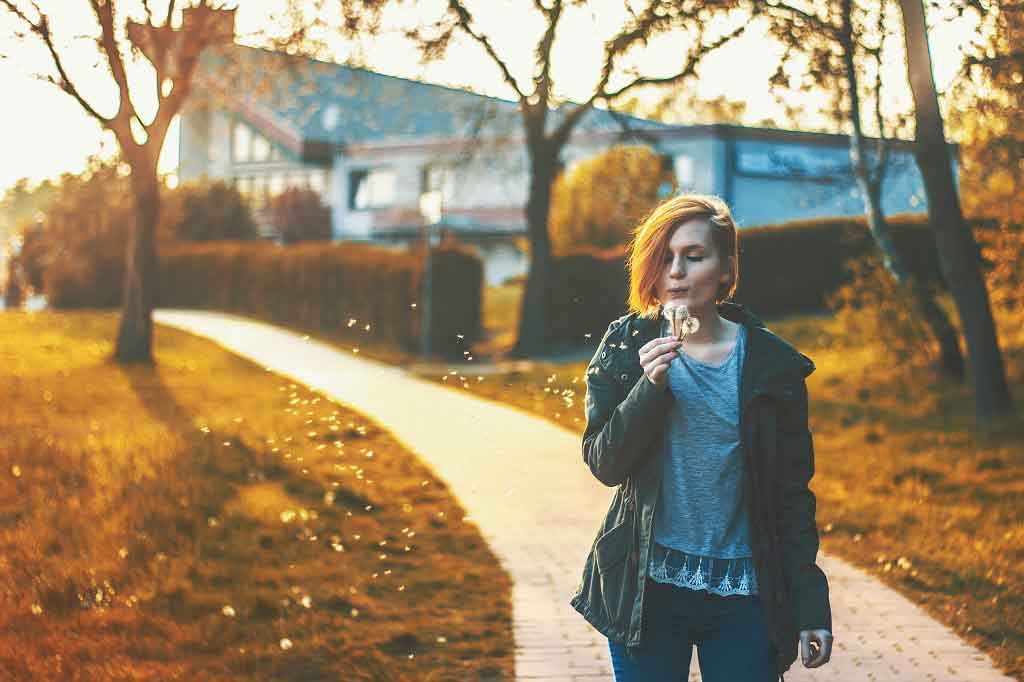Seasonal allergic rhinitis
Introduction

Allergic Rhinitis, also known as Hay fever, is a common allergic condition that affects up to one in five people at some point in their life.
Symptoms of hay fever include:
- sneezing
- a runny nose
- itchy eyes
You'll experience hay fever symptoms if you have an allergic reaction to pollen.
Pollen is a fine powder released by plants as part of their reproductive cycle. It contains proteins that can cause the nose, eyes, throat and sinuses (small air-filled cavities behind your cheekbones and forehead) to become swollen, irritated and inflamed.
You can have an allergy to:
- tree pollen, released during spring
- grass pollen, released during the end of spring and beginning of summer
- weed pollen, released late autumn
Around half of people report some improvement in symptoms after several years. Symptoms disappear completely in around 10-20% of people.
Hay fever treatment
There's currently no cure for hay fever, but most people are able to relieve symptoms with treatment, at least to a certain extent.
The most effective way to control hay fever would be to avoid exposure to pollen. However, it's very difficult to avoid pollen, particularly during the summer months when you want to spend more time outdoors.
Treatment options for hay fever include Antihistamines , which can help to prevent an allergic reaction from occurring and corticosteroids (steroids) , which help to reduce inflammation and swelling.
Hay fever can often be controlled using over-the-counter medication from your pharmacist. However, if your symptoms are more troublesome its worth speaking to your GP, as you may require prescription medication.
For severe andpersistent hay fever, there's also a type of treatment called immunotherapy. It involves being exposed to small amounts of pollen over time, to build resistance to its allergic effects. However, this can take many months or even years to work.
It's estimated that there are more than 10 million people with hay fever in England.
You can get hay fever at any age,althoughit usually begins in childhood or during the teenage years. It's more common in boys than girls. In adults, men and women are equally affected.
You're more likely to develop hay fever if you havea family history of allergies , particularly asthma or eczema .
Self-help tips
It's sometimes possible to prevent the symptoms of hay fever by taking some basic precautions, such as:
- wearing wraparound sunglasses to stop pollen getting in your eyes when you're outdoors
- taking a shower and changing your clothes after being outdoors to remove the pollen on your body
- staying indoors when the pollen count is high (over 50 grains per cubic metre of air)
- applying a small amount of Vaseline (petroleum gel) to the nasal openings to trap pollen grains
People with very severe hay fever often find that it can disrupt their productivity at school or work.
Inflammation of the sinuses ( sinusitis ) is another common complication of hay fever. Children may also develop a middle ear infection (otitis media) as a result of hay fever.
Sneezing: Sneezing is an involuntary expulsion of air and bacteria from the nose and mouth.
Introduction
Rhinitis, also known as Hay fever, is a common allergic condition. Symptoms include sneezing, runny nose, and itchy eyes. There's currently no cure for hay fever, but most people are able to relieve symptoms with treatment, at least to a certain extent.
Symptoms of hay fever
Hay fever symptoms vary in severity and may be worse some years, depending on the weather conditions and pollen count. The time of year your symptoms start will depend on the types of pollen you're allergic to. Symptoms include frequent sneezing; a blocked or runny nose; itchy, red or watery eyes; etc.
Causes of hay fever
It's unclear what causes the immune system to react in this way, but there are several factors that can increase your risk of developing hay fever. Risk factors include asthma and a family history of hay fever.
Diagnosing hay fever
Your GP should be able to diagnose hay fever from a description of your symptoms. In some cases, you may be referred for allergy testing.
Treating hay fever
Before going to see your GP, you could visit your pharmacist and try to treat your hay fever symptoms with over-the-counter medications, such as antihistamines. Make an appointment to see your GP if your symptoms don't improve after using antihistamines.
Complications of hay fever
Hay fever can lead to complications such as sinusitis and middle ear infections (otitis media). It can also have a significant impact on your daily activities. In one study, a third of adults with hay fever reported that their symptoms had a considerable negative impact on their work, home and social life.
Preventing hay fever
It's very difficult to completely avoid pollen. However, reducing your exposure to the substances that trigger your hay fever should ease your symptoms. Rubbing a small amount of Vaseline (petroleum gel) inside your lower nostrils can help to prevent pollen from entering your nasal passages.
Patient story: "When I first got hay fever, I already had Asthma."
Lisa Miles, from Kent, tried several different treatments before she found the right one for her. She tells how she relieves her hay fever symptoms.







 Subscribe
Subscribe Ask the doctor
Ask the doctor Rate this article
Rate this article Find products
Find products